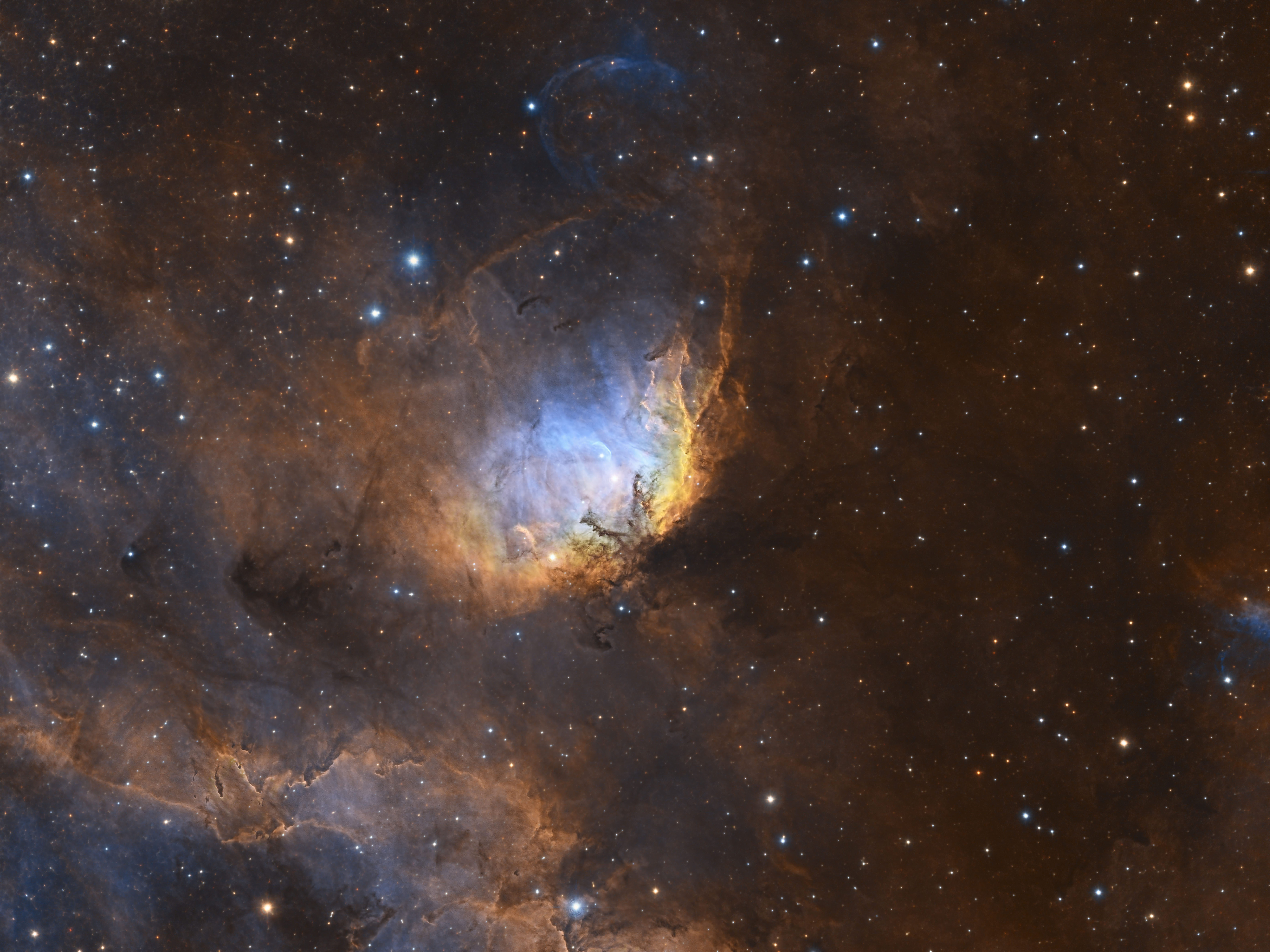I've been using this target as a test for improving my autoguiding for about two months, over 24 separate nights. I accumulated quite a lot of data, but as I was working on guiding, 22 sub-frames were rejected during pre-processing. In the end the bad pixel-rejection algorithms did a good job, but the stars retained a noticeable elongation due to RA jitter on many of my frames. This was taken into account during deconvolution.
This image is a narrow-band image in the Hubble palette, with RGB stars added from a smaller number of sub-frames I made in RGB (no Luminance as I only wanted the star colours). I used Star Xterminator on both the SHO and RGB images to enable more effective processing, and had to increase the star luminosity (using PixInsight's Curves process) before combination using the op_screen operator in PixelMath. I also used several passes of the Morphological Transform to erode the stars before this, as the full glory of the RGB stars was very unrepresentative of the appearance of the stars in narrow-band.
This object is a bright emission region and features in Stewart Sharpless' second catalogue, compiled in 1959 from Palomar Sky Survey images. Its common name is the Tulip Nebula, due to its resemblance to a cross-section through a tulip flower. The nebula itself is about 6000 light years away and, as is evident if the image, it lies within a larger region of gas clouds. The nebula itself is bright due to emission stimulated by young, hot stars in the "bowl" of the nebula, and there are also dark dust clouds which, in this case, appear as the stamens of the tulip.
But the most interesting feature of this image is the blue arc at the upper centre of the picture. And also the bright pair of stars to the right, apparently along the axis of this arc and above the left-hand side of the tulip.
The rightmost, and brighter, of the pair is a class O supergiant, more than 20 time the mass of our Sun and about 7100 light years away. It has an invisible companion: a black hole; the first to be discovered in fact. It's called Cygnus-X1 as it was originally discovered in 1964 due its X-ray emission, during a sounding rocket flight. The star and black hole orbit each other at a distance of only 20% of the distance from the Earth to the Sun.
The black hole sucks in material from its doomed companion which forms a rapidly spinning accretion disk around the black hole. Approaching the back hole this disk heats up to millions of degrees, generating the observed X-rays. Furthermore, jets of particles at near light speed are ejected perpendicularly to the accretion disk. It is one of these relativistic jets, impacting the cold gas of interstellar space, which is causing the visible shock wave glowing in a blue arc.


